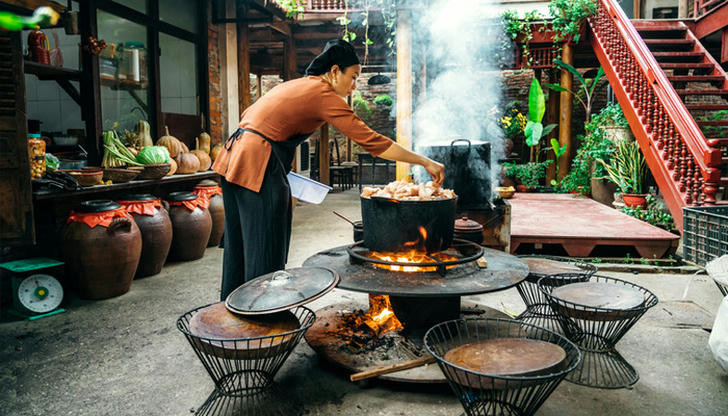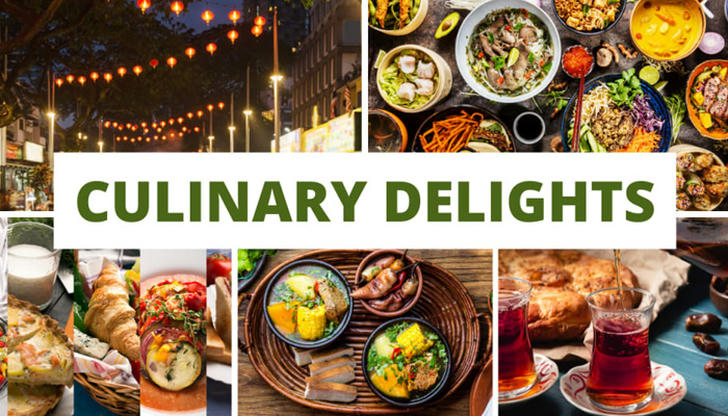Exploring Culture Through Food: A Culinary Travel Guide
Food is more than sustenance—it is a living narrative of a community’s history, geography, economy, and identity. For travelers, cuisine offers one of the most intimate and enriching ways to understand the cultures they encounter. Whether it’s the spice-laden markets of Morocco, the humble noodle stalls in Vietnam, or the family-run trattorias in Italy, food creates opportunities for connection, discovery, and appreciation.

In this culinary travel guide, we explore how food serves as a gateway to cultural immersion, the best ways to approach food-centered travel, and practical advice for those eager to taste the world.
Why Food Is Central to Cultural Exploration
1. Cuisine Reflects History and Tradition
Every dish tells a story. Colonial influences, migration patterns, trade routes, wars, and climate all shape what ends up on a plate. For example, Peru’s national dish—ceviche—is a legacy of Incan preservation techniques blended with Spanish citrus influence. Similarly, the spices in Indian curries reflect centuries of trade with Arab, Persian, and European merchants.
2. Food Preserves Language and Rituals
Many culinary practices are accompanied by traditional phrases, stories, or seasonal rituals. Participating in or witnessing these customs—like a Japanese tea ceremony or a Chinese dumpling-making session during Lunar New Year—offers insight into intangible cultural heritage.
3. Food Strengthens Community Bonds
Eating is often a communal activity. Dining with locals, attending food festivals, or joining a family for a meal allows travelers to participate in shared cultural experiences and build authentic relationships.
Culinary Tourism: A Growing Trend
Culinary tourism, also known as food tourism, is a rising trend among travelers who seek to explore destinations primarily through their food and beverage offerings. According to the World Food Travel Association, over 80% of travelers consider food and drink experiences a major part of their travel planning.
Key types of culinary tourism include:
- Street food exploration
- Cooking classes and food workshops
- Winery and brewery tours
- Visits to traditional farms and food markets
- Participation in harvest festivals or seasonal celebrations
How to Plan a Culinary-Focused Trip

1. Research Local Food Traditions
Before your journey, delve into the culinary culture of your destination. Learn about regional dishes, common ingredients, and meal customs. Watch documentaries, read blogs, or explore cookbooks specific to the region.
2. Take a Cooking Class
Cooking classes offer hands-on learning and often include market tours where you can source ingredients. Look for classes run by locals in their homes for the most intimate experience.
3. Visit Local Markets and Street Food Stalls
Markets are vibrant hubs of community life. They offer a feast for the senses and a chance to try an array of local delicacies. Sampling street food is often the most affordable and authentic way to taste a region’s cuisine.
4. Dine at a Range of Venues
Try everything from hole-in-the-wall eateries and family-run cafes to high-end restaurants. Each setting offers a different glimpse into the culinary landscape and social fabric of a place.
5. Respect Cultural Dining Etiquette
Customs vary widely: in Ethiopia, diners share food from a communal plate using their hands, while in Korea, hierarchical seating and order of serving matter. Research basic etiquette to show respect.
Must-Visit Culinary Destinations
1. Italy
Famous for: Pasta, pizza, gelato, regional wines Highlights: Regional specialties such as Tuscan wild boar, Neapolitan pizza, Sicilian cannoli. Participate in a truffle hunt or pasta-making class.
2. Thailand
Famous for: Thai curry, street food, tropical fruits Highlights: Night markets in Chiang Mai, Pad Thai from roadside stalls, green curry cooking classes in Bangkok.
3. Mexico
Famous for: Tacos, mole, mezcal Highlights: Oaxaca’s food scene, tamale-making workshops, Day of the Dead culinary traditions.
4. Japan
Famous for: Sushi, ramen, tempura, matcha Highlights: Tsukiji Fish Market, tea ceremonies in Kyoto, kaiseki dining experiences, izakaya hopping.
5. Morocco
Famous for: Tagine, couscous, mint tea Highlights: Spice markets in Marrakech, cooking classes in Fez, family-style meals in riads.
Responsible Culinary Travel

As with all forms of travel, culinary tourism should be approached with ethics and sustainability in mind.
1. Support Local and Small Businesses
Choose locally owned restaurants, farms, and tour operators. Avoid large chains or exploitative food experiences that don’t benefit the community.
2. Avoid Harmful Food Practices
Be conscious of the ethical treatment of animals and the environmental impact of your food choices. Avoid endangered species or unsustainable fishing practices.
3. Respect Cultural Boundaries
Don’t pressure locals to alter recipes to suit your tastes. Embrace the unfamiliar and be open to new textures, flavors, and preparations.
4. Reduce Food Waste
Order only what you can finish. Bring a reusable container or ask for leftovers to-go. Appreciate every ingredient, especially in places where food scarcity is an issue.
Tools and Resources for Culinary Travelers
Apps and Websites:
- Eatwith (local dining experiences)
- Withlocals (home dinners and cooking lessons)
- HappyCow (for vegetarian/vegan travelers)
- Culture Trip (destination food guides)
Books and Documentaries:
- Anthony Bourdain: Parts Unknown
- Salt, Fat, Acid, Heat by Samin Nosrat
- The Food Traveler’s Handbook by Jodi Ettenberg
Final Thoughts: Let Your Taste Buds Lead the Way
Food is a universal language—one that transcends words and fosters human connection. Through cuisine, we come face-to-face with heritage, resilience, creativity, and community. Culinary travel not only delights the senses but deepens our understanding of the world.
So, pack your curiosity, a hearty appetite, and a spirit of respect. Let each meal tell you a story, each flavor guide your journey, and each shared table remind you that we are all part of one global feast.
